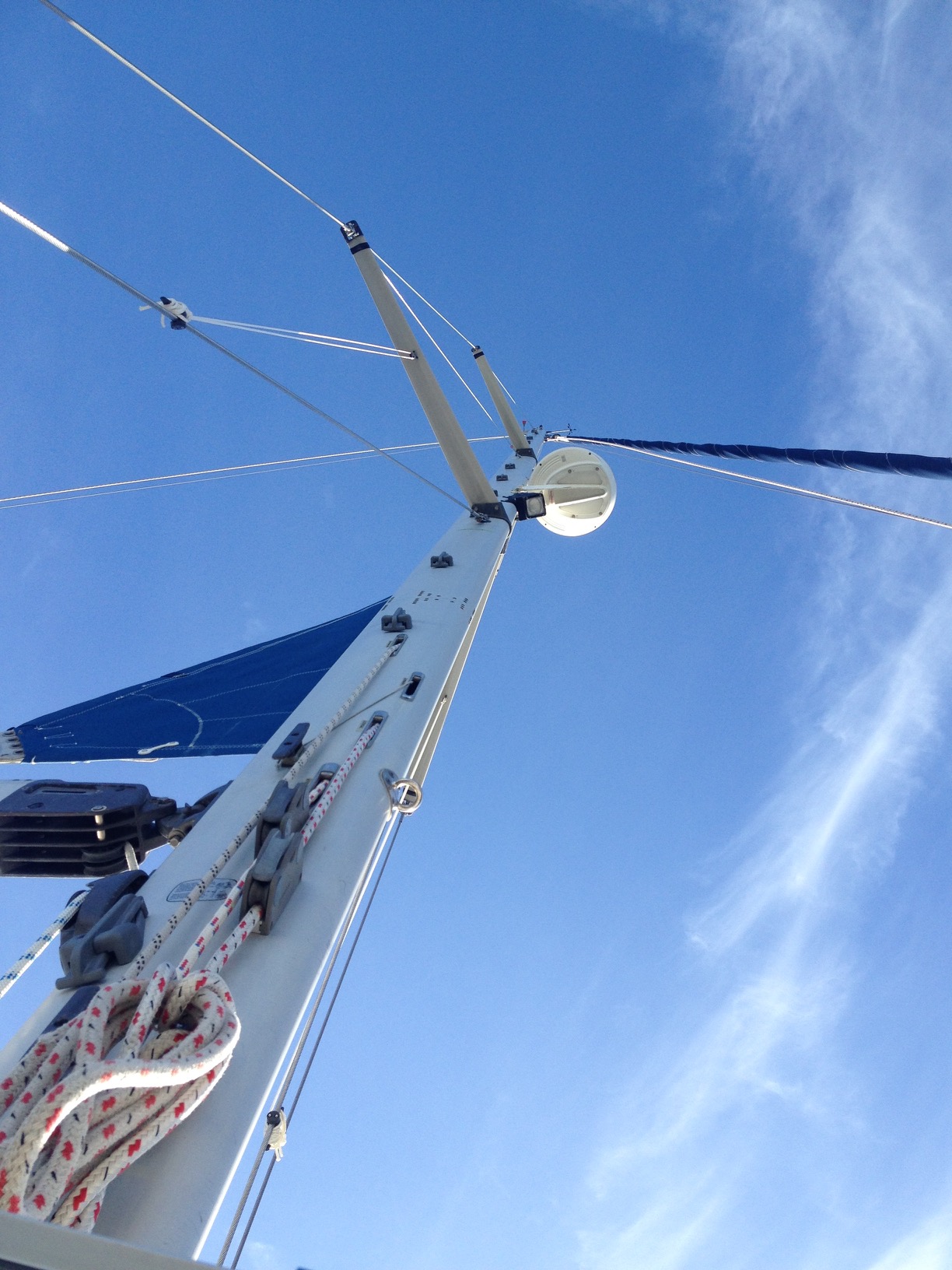Yngmar - can you provide a bit more info regarding your installation (photo?), mainly regarding the position of the steps, which you mentioned should be considered for an in mast furling system.
The trick is to avoid drilling into anything important. This includes halyards, cables and the furling sail chamber. Look up your mast profile in the Selden manuals (and/or peek into the mast with a snake cam, mobile phone taped to a folding rule or eyeballs to confirm) so you know where the cables run. For mine it was a non-issue, as cables run in a channel in the center, no chance of drilling into that. Halyards are easy when the mast is down - just drill from the top and gravity will ensure the halyards are at the bottom, far away from your drill. Plus most of them are replaced with mouse lines anyways, although you shouldn't drill into those either. Trickier when the mast is up! Use a drill with a depth limiter or safer, a stopper sleeve on the drill bit.
For the in-mast furler, you mustn't drill into the sail chamber of the mast extrusion at all, not even a little bit, or you will leave a sharp burr that will shred your sail to bits next time you furl/unfurl. Conveniently, the Selden mast is marked with a thin groove where this safe zone is. I nonetheless carefully measured about 8 times just to make sure. This however means your steps are going to be a fair bit forward, about in the center of the mast (giving you the option to climb up the front or the back). Below the gooseneck you have to figure out where to put the 1-2 steps there to avoid interfering with control lines, but as there is no sail there, you can safely rivet into the furling part.
The vertical spacing between steps for me is 50cm, which I've worked out by repeatedly stepping up and down a chair at home while stacking various things under it. This should work for most people according to the rigger, but if you're a bit short-legged, test it first. You don't need steps at the spreaders, as they're fine for standing on (near the mast base). You may or may not want a step at the boom - I didn't put one and it's a bit awkward getting past it unless I release the outhaul and tuck the clew of the furling sail away a bit. As the spacing between spreaders is not exactly divisible by 50cm, you'll end up with the steps 48.73cm apart in one set and 49.3cm in another. Don't worry, nobody can tell looking from below

Once that is done, the rest was simply drilling (cobalt bit to match the rivet size, cutting oil, rags to wipe off oil) and riveting (Duralac, rags to wipe off sticky yellow stuff). Mind the Duralac, they're not joking when they claim it's water proof once cured. Great stuff to protect metals from corrosion, not so great on the crotch of your trousers (it's yellow, and it'll never wash out...)
Here's a snap looking up the mast:
